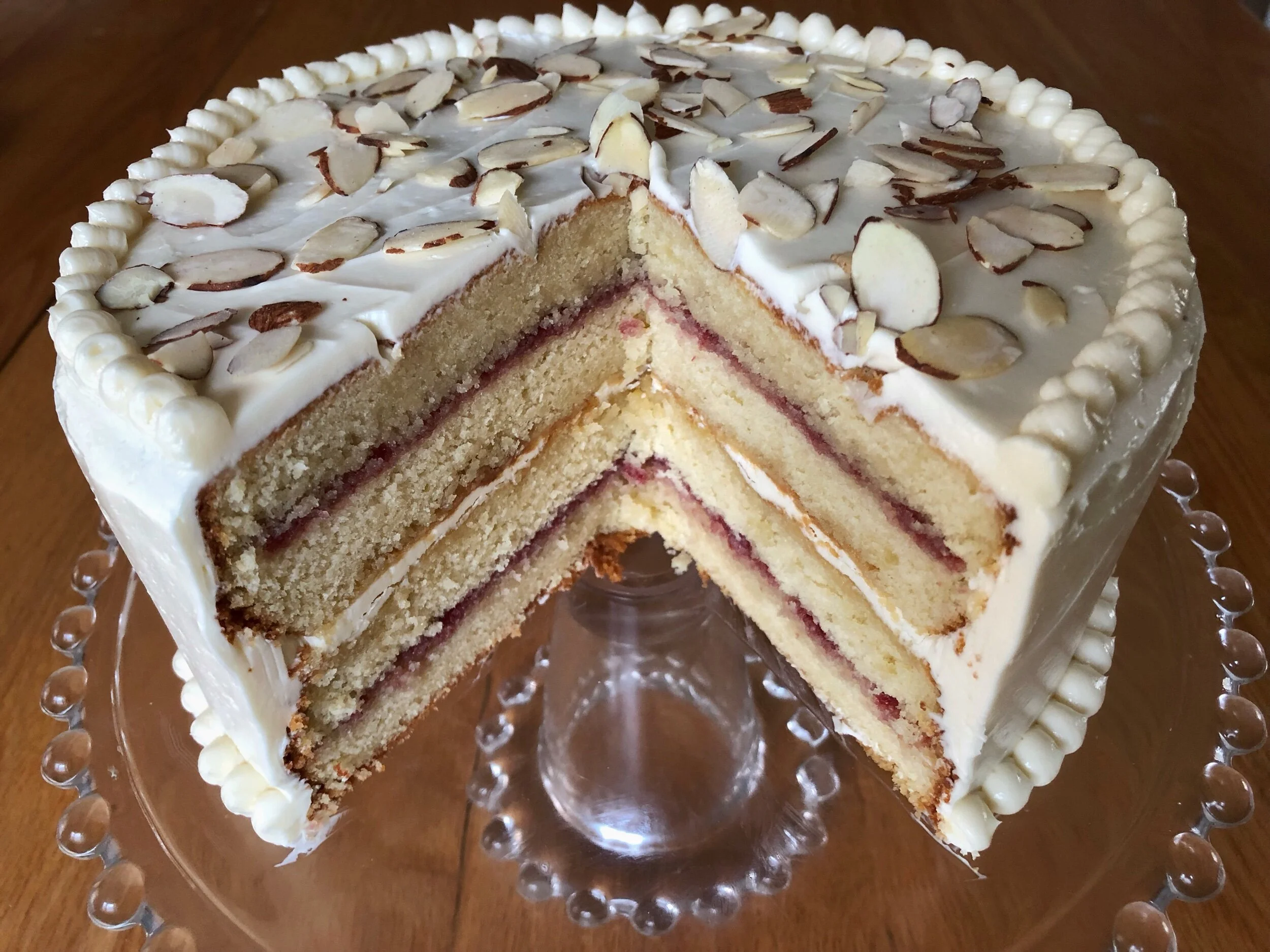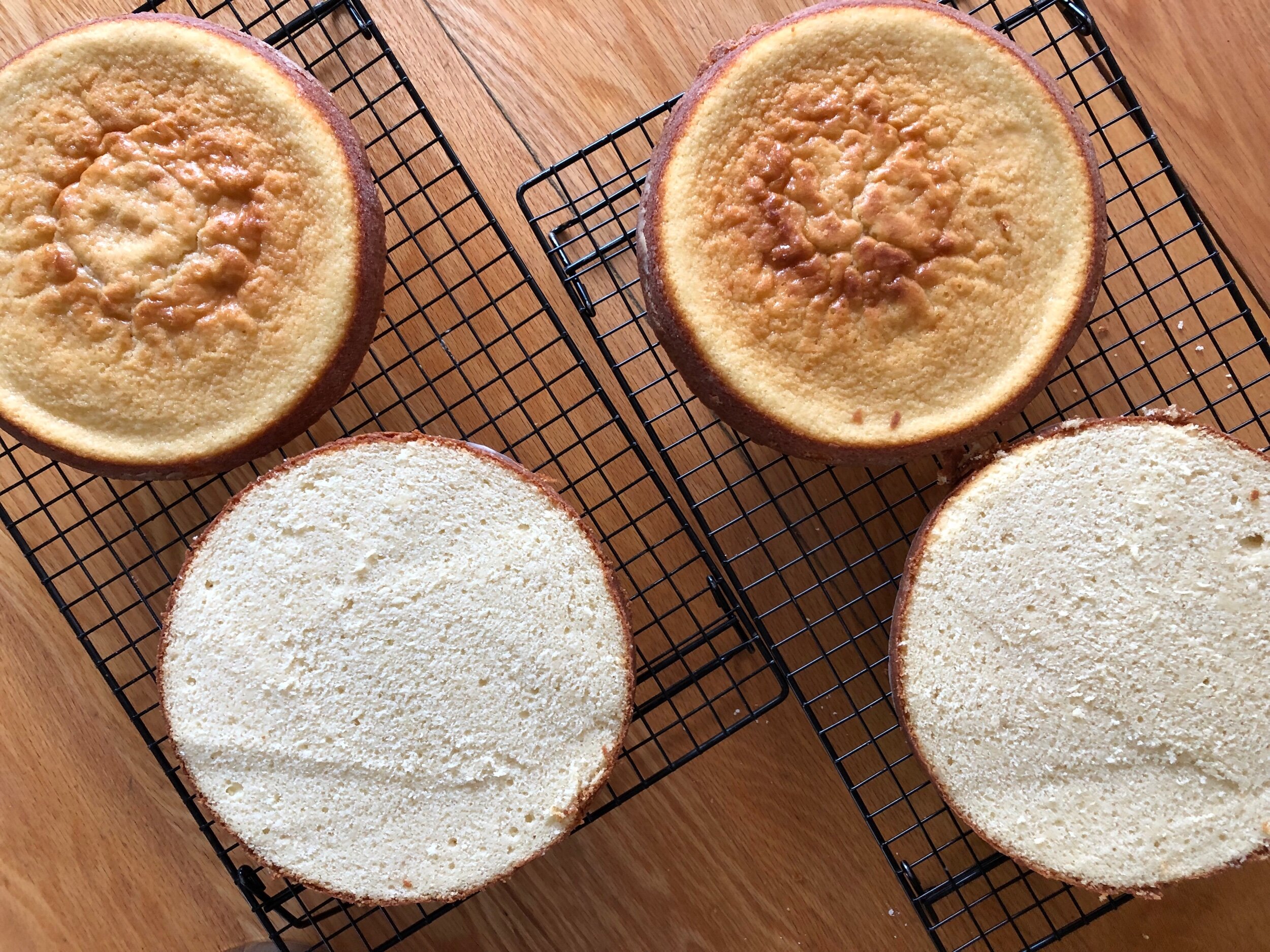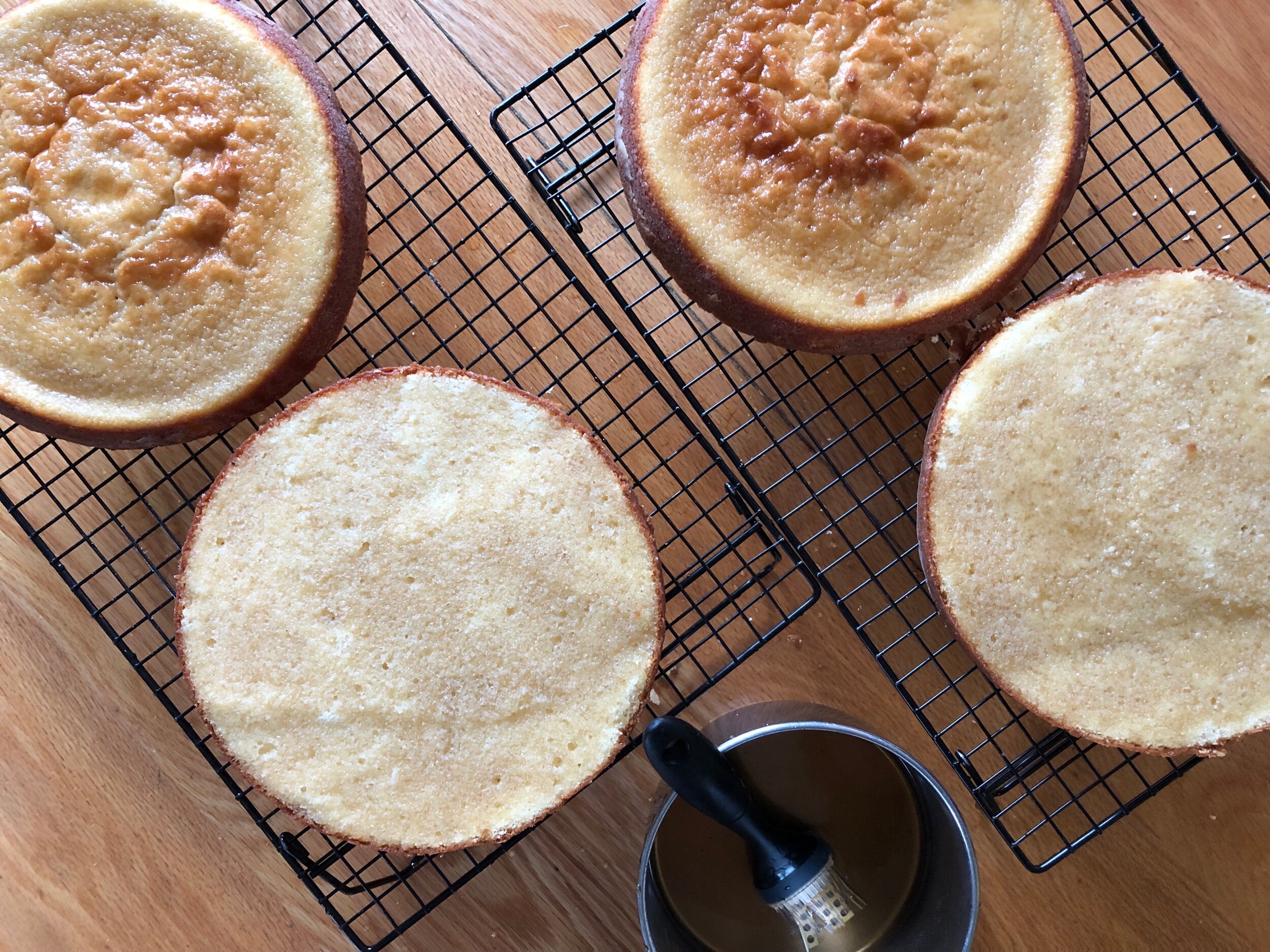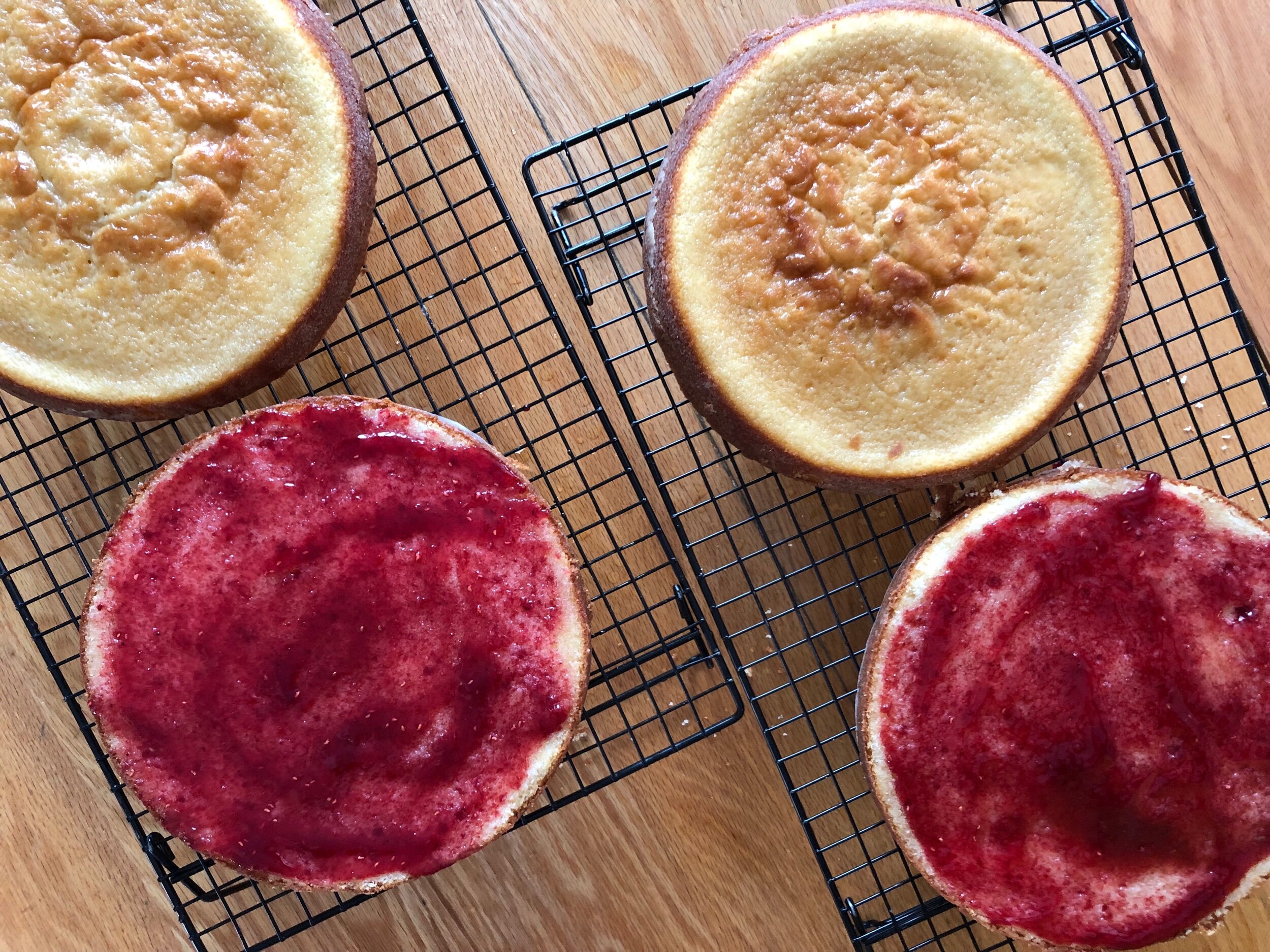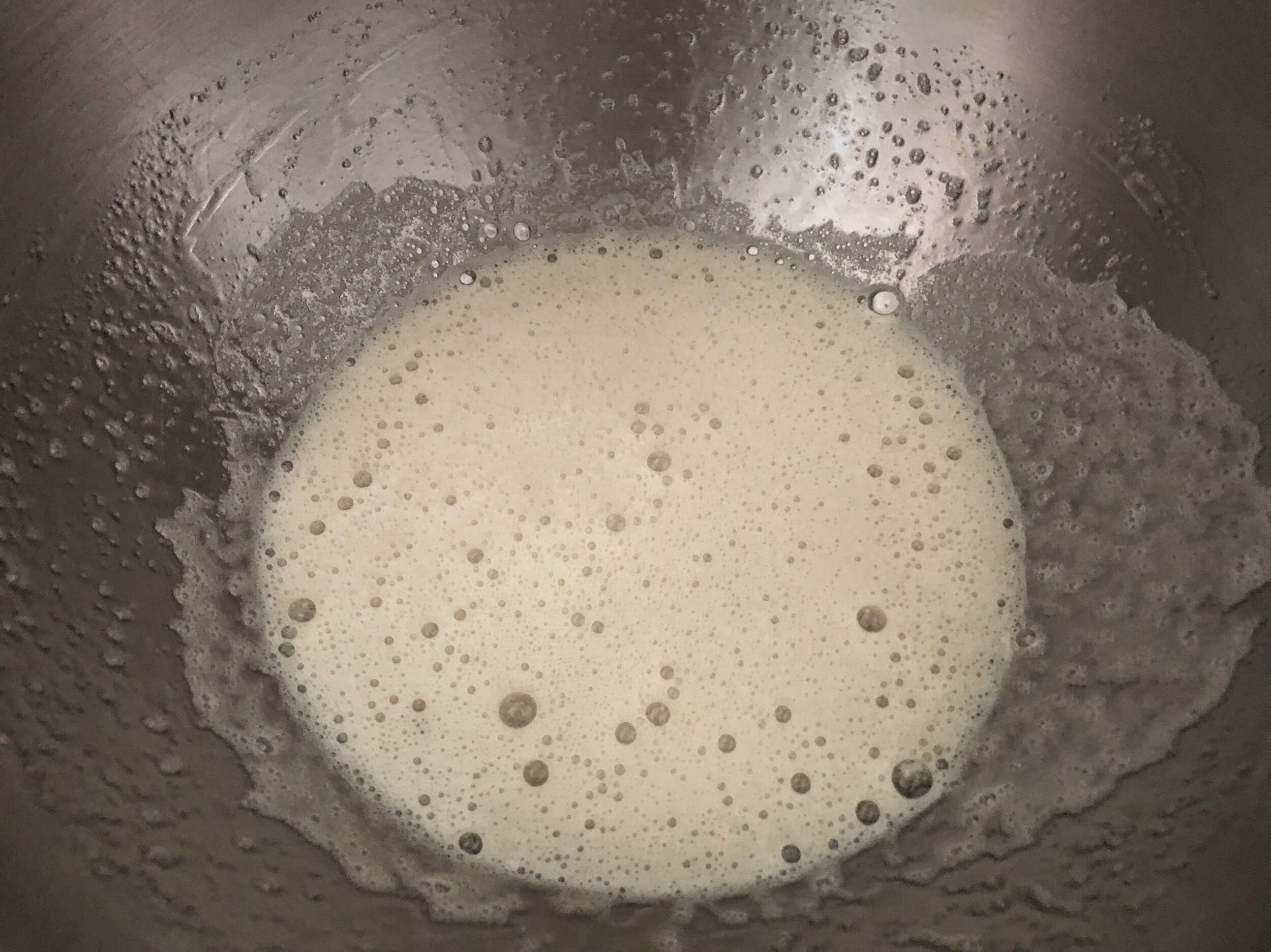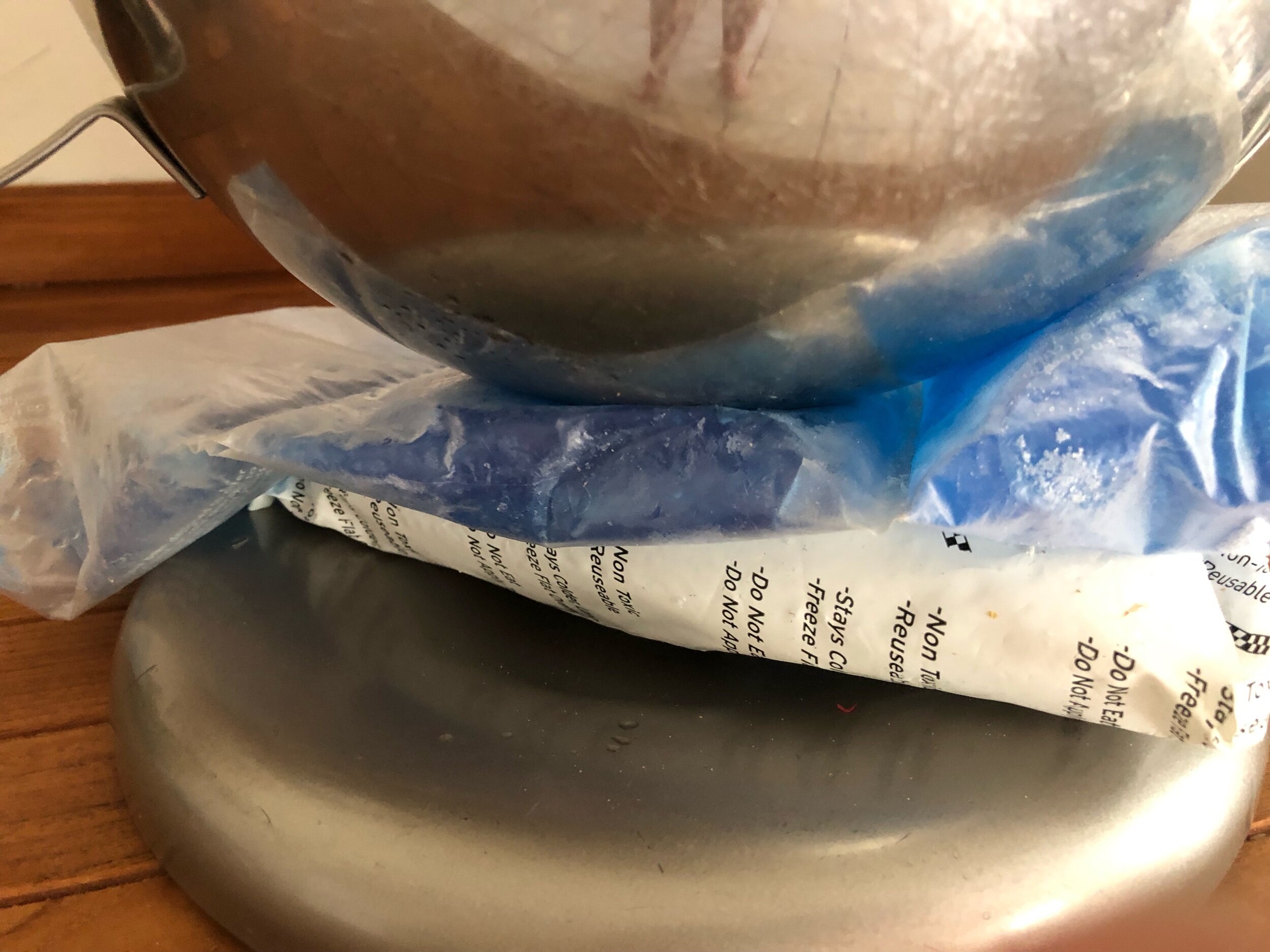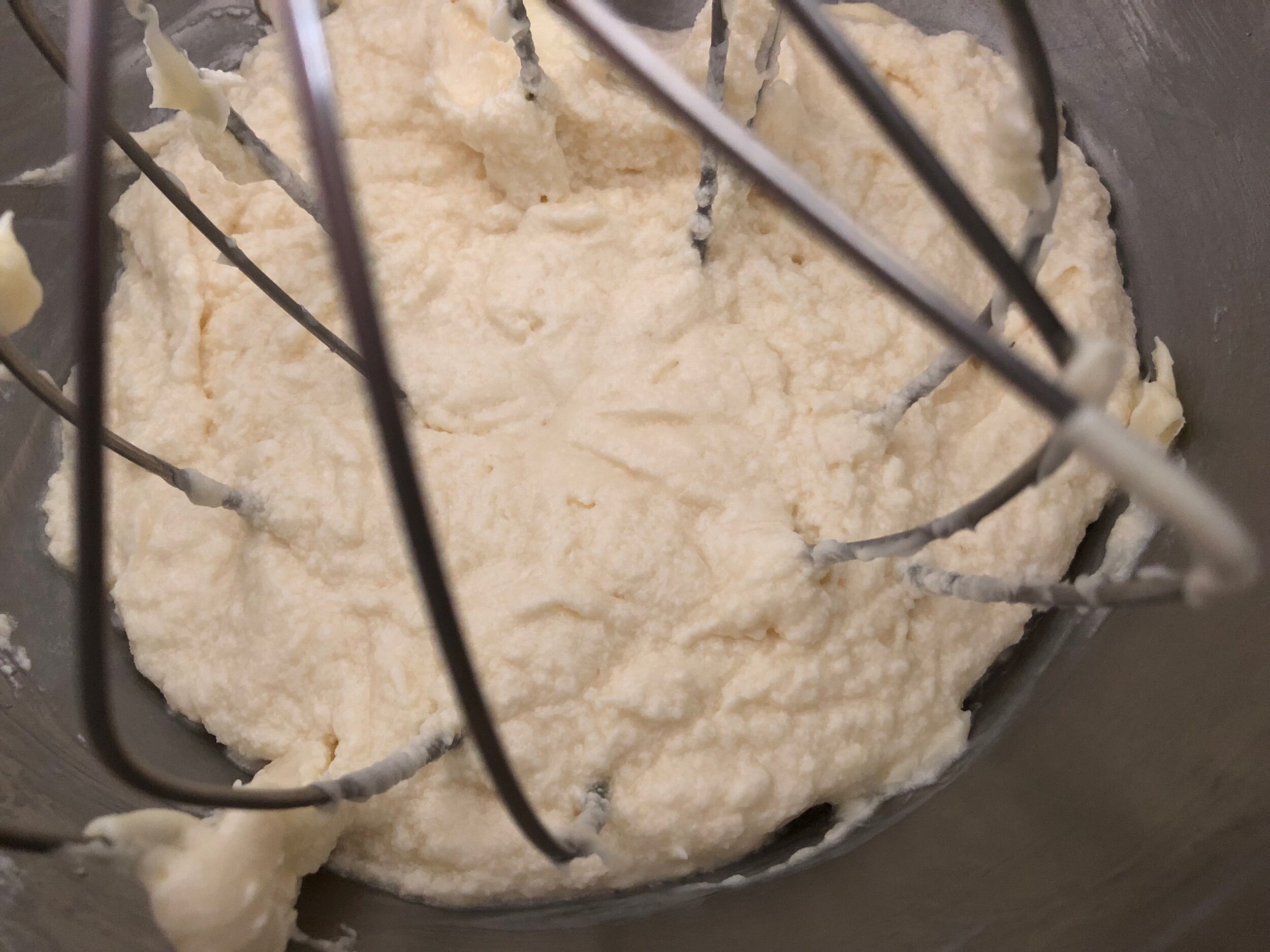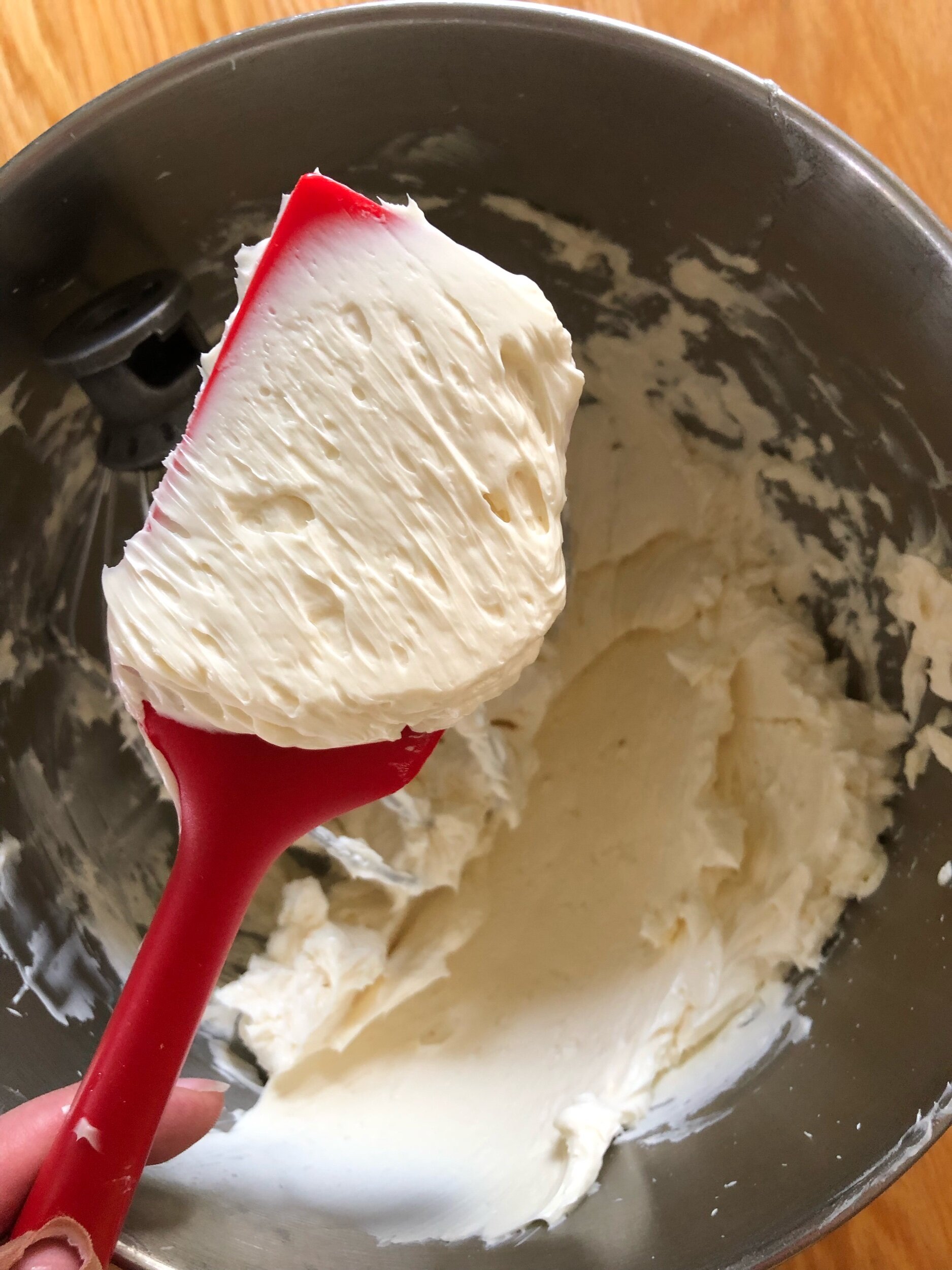almond raspberry "wedding" cake
A rich vanilla buttermilk layer cake glazed with an amaretto syrup, filled with raspberry jam and topped with a lightly almond-flavored swiss meringue buttercream.
I love this cake, so much. It’s rich, and yet delicate. Sweet, but not too sweet. The flavors come together into a soft balance—just a touch of almond and a kiss of raspberry.
I’ve made this cake many times, in very large volumes. Almond and raspberry are a classic wedding cake flavor-combination, and I’m always quick to suggest it when making a tiered cake for a wedding or shower.
One of the loveliest things about this cake is how sturdy it is…it really stands up to being stacked high, and the moistness of the layers, sealed in with the amaretto syrup, guarantees it can be made and assembled ahead without drying out.
making this cake ahead, for, say, a wedding
In the past, I’ve put frosting in between all the layers, building a frosting dam around the edges for the jam to sit in. But I’ve come to prefer sandwiching the layers directly with the jam, and only having frosting in the middle of the four total layers. Here’s why: the raspberry jam kind of soaks into the cake and melds it together, which is something I love. There’s less of a raspberry POW! and more of a gentle raspberry kiss.
It’s also easier to handle this way, because you don’t have to bother with making a proper frosting dam, keeping the jam definitively inside the cake and not spilling out. When you’re frosting the sides, there is virtually no risk of raspberry jam oozing out and spoiling the pristine whiteness of the frosting.
(Read about the trials of uncontained jams here.)
And here’s another reason: preparing the layers this way makes the cake supremely freezable, i.e. make ahead-able, and that’s a game changer when you are preparing large volumes of cake for a special event, like a wedding. You can make the cake layers, prepare the amaretto syrup and raspberry jam, then slice, soak, fill, and sandwich. Brush all over with more amaretto syrup if you desire, then wrap each of the sandwiched layers tightly in plastic wrap and freeze, up to several days in advance of the event date, if not more.
When you are ready to assemble the final cake, simply pull the layers out of the freezer to defrost, prepare the swiss meringue buttercream, and assemble. You don’t even need to let the cake layers fully defrost before frosting. In fact, I prefer to work with chilled layers, because the cakes set up far more quickly that way.
a note on swiss meringue buttercream
Meringue buttercreams are kind of the gold standard of frostings in the pastry world, and Swiss Meringue Buttercream is among the favorites. it’s not my favorite, but I’m probably alone, or among a very small number, who feel that way. I far prefer SMBC when blended with white chocolate (as I do for my Oreo Cake!) or dark chocolate, but even then…. My favorite frostings are boiled milk frostings, and (shocking! I know) variations of the American buttercream (which many turn down their nose at). The yolk-based French buttercream is ultra decadent and not exactly suitable for a frosting, I think. It’s much better as a filling. And Italian meringue buttercream is fairly similar to SMBC, but a bit more labor intensive.
My REAL favorite is the naked cake, because it has very little frosting of any sort. I am not a frosting person.
But Swiss Meringue Buttercream, besides requiring slightly more technique than the classic American buttercream, has its virtues. It does produce an absolutely gorgeous silky white and luscious buttercream, and its iridescent sheen lends itself so well to a wedding cake, particularly to piping pearls.
Some are intimidated by SMBC but there isn’t really any need. Although it involves beating egg whites, it’s not as finicky as it seems, especially if you take the right precautions (spelled out in the recipe below). One thing that can be difficult is that you don’t want to introduce any water to the egg-sugar mixture, and there’s a risk of that if you transfer the mixture from the bowl you warmed it in over simmering water to the bowl of your stand mixer. You can eliminate that risk altogether by warming the egg-sugar mixture directly in the bowl of the stand mixer. The downside is that it retains more heat because there is no transfer between bowls, and if the mixture is too warm when you add the butter, the butter will begin to melt. Solve that by putting some ice packs around the bowl as you beat the mixture…I’ve never had an issue!
Another thing about SMBC is that it gets bad before it gets better. When you first add the butter it turns into a curdled mess. You may be tempted to panic, but don’t. You just need to keep beating and the whole thing will come together again.
almond raspberry "wedding" cake
Ingredients:
[for the cake:]
4 eggs, at room temperature
2 egg yolks, at room temperature
1 1/4 cup buttermilk, at room temperature
2 teaspoons vanilla (or, to bump up the almond profile, 1 tsp vanilla and 1 tsp almond extract)
3 cups cake flour, sifted (see note)
2 cups white sugar
1 tablespoons + 1/2 teaspoon baking powder
1/2 teaspoon salt
2 sticks (8 oz) unsalted butter, softened
[for the amaretto soak:]
1/2 cup cold water
1/2 cup white sugar
4 tablespoons amaretto liqueur
[for the raspberry filling:]
1/2 cup (6 oz.) seedless raspberry jam (a little more if using seeded jam, because you’ll have to strain out the seeds and will lose some jam in that process)
[for the almond swiss meringue buttercream:]
1 cup (7 oz) white sugar
4 (~4.5 oz) egg whites
2 teaspoons almond extract
3 sticks (12 oz) unsalted butter, softened
pinch of salt
slivered almonds, for decorating
Directions:
Make the cake. If you haven’t done so already, make sure eggs, butter and buttermilk are on counter to come to room temperature. Preheat oven to 350 degrees. Grease and flour two 8-inch round pans lined with parchment paper.
In a small mixing bowl, whisk together 1/4 cup buttermilk, eggs, yolks, and vanilla. In the bowl of a stand mixer fitted with paddle attachment, combine remaining 1 cup buttermilk, flour, sugar, baking powder, salt and butter. Beat at low speed until moistened, scrape down bowl, increase to medium-high and beat until creamy light and fluffy, about 2-3 minutes. Add the egg mixture in three additions, scraping down bowl after each addition and beating at medium speed only until just combined.
Divide batter evenly between prepared pans. Bake at 350 degrees until golden and the top springs back when lightly pressed, or a toothpick inserted near the center comes out clean, about 30-35 minutes. Set aside to cool.
Prepare amaretto soak. Make the amaretto soak by whisking together water and sugar in a small saucepan. Bring to a boil, then reduce heat to low and simmer for 5 minutes. Remove from heat and whisk in amaretto. Set aside.
Prepare raspberry filling. Place raspberry jam in a small saucepan and gently warm to loosen. If the jam has seeds, pass it through a fine sieve to remove the seeds.
Make the swiss meringue buttercream. Place egg whites and sugar in the bowl of a stand mixer. Make sure your bowl and utensils are super clean with no grease or water or residue on them. I like to wipe down my bowl, whisk and whisk attachment with a paper towel moistened with lemon juice or vinegar before beginning, which helps remove any grease/residue.
Place bowl over a small pot of simmering water and warm egg mixture, whisking occasionally, until the sugar has dissolved and mixture is warm to the touch. (You can stick two clean/dry fingers in the egg mixture and rub it between your fingers to judge.) Remove from heat and return bowl to stand mixer.
Using whisk attachment, beat mixture at medium speed until it has cooled and is marshmallowy and white and roughly doubled in size. (I like to place ice packs around the exterior/base of my mixing bowl to help bring the temperature down before adding butter.)
Add almond extract and beat to combine, about 30 seconds. Add butter, half a stick at a time, and beat at medium-high speed until it all comes together into a luscious, glossy, creamy frosting. There will be a phase when it looks curdled, but don’t worry, just keep beating. It will come together after a few minutes.
Assemble the cake. When the cake layers have cooled, slide a knife around the edges to loosen the cake from the sides of the pan. Turn layers out onto a wire rack and invert to right side up. Use a long serrated knife to cut each layer into two. Lift off the top layer and place down on wire rack right side up as well. See photos for reference.
Use a pastry brush to brush the amaretto soak all over the tops and sides of the four layers. The cake layers should absorb at least half of the amaretto soak, if not more. You can save any remaining syrup to make a cocktail later on. (Amaretto Sours, anyone?!)
Spread half the raspberry jam on first one cut layer, and then the other half on the other cut layer. Top each cut layer with its matching top half of cake to make two cake-layer sandwiches. See photos for reference if that’s confusing.
Place one sandwiched layer on cake stand, spread frosting evenly and then top with second layer. Frost tops and sides, using any remaining buttercream to pipe decorations as desired. I used a 1/2-inch round tip to pipe pearls around top and base. Top with a sprinkling of slivered almonds. Slice and serve!
tips for success in baking and assembling layer cakes:
ingredient preparation: having your ingredients at room temperature before beginning is a good idea, particularly for eggs and butter. This will ensure that your ingredients blend together in the right way. If you forgot to prepare ahead of time, you can always place your eggs in a bowl of lukewarm water to help bring them to room temperature more quickly. Likewise, butter can be softened (carefully!) in the microwave, or you can also cut it into cubes, place in a bowl filled with tepid water, and let sit for a few minutes. Drain water and lightly pat butter day with a paper towel before using.
no cake flour? no problem! you can make your own cake flour at home. The equation is simple: 1 cup all-purpose (preferably low-protein count) flour - 2 tablespoons flour + 2 tablespoons corn starch = 1 cup cake flour. Usually I measure mine out by placing 2 tablespoons corn starch in a 1-cup measuring cup, then spooning all-purpose flour on top and using a knife to level it off. For best results, you’ll want to sift this flour. A lot. Like, sift the heck out of it. I usually sift it 5-10 times through a fine mesh sieve between two bowls, just to be sure, or I’ll put it through my old-fashioned flour sifter once or twice.
do I really need to grease and flour AND line my pans with parchment paper? Do you want guaranteed success, or do you want to take the risk of sticking and breaking? If you grease and flour a parchment-lined pan, I guarantee you will never ever struggle to get your layers out of your pans . Also, if you do these things, you can let your layers cool completely in their pans, because there is no risk of them sticking. You can also flash-freeze the layers in the pans (i.e. place them in the freezer while still hot/warm) for later usage. Always always just do it all. It saves any risk of headaches and frustration.
divide batter evenly by using a kitchen scale. This is the best way to ensure you have perfectly even layers. If you have two of the same pan, you can simply divide it by eye, then weigh each pan and use a spoon to move the batter and distribute the batter evenly. If your pans are not the exact same, you’ll have to tare or weigh the pans before adding batter and then figure out the math yourself. :)
let your cakes cool. completely. your cakes really need to be totally cool before frosting, otherwise they are not as stable themselves (they can crumble and break) and the frosting will melt. It’s hard to retrieve melted frosting. It also offers no additional stability to your cake if it melts. In fact, it will contribute to sliding around. I prefer my cake layers quite the opposite: cold or frozen. They are much easier to handle when chilled, and if you are confident in your frosting skills (that is, you can work quickly) the assembled cake will set up and be firm faster.
frosting cakes: it’s too much to explain technique here, but there are certain tools that make the whole process easier, like an offset spatula for spreading and a bench scraper for smoothing the sides. And a rotating cake stand is also a wonderful tool to have. Practice, practice, practice is the best way to build confidence when frosting a cake. And another good idea is to head over to instagram and watch cake decorating videos. They will inspire you and show you the rhythm. If you’re prepared with the right tools and enough frosting, you can get perfectly even sides and sharp edges. But a more rustic look is pretty popular now, and much easier to achieve!
make ahead: I explain above about how you can make this cake ahead for an event. The easiest way I’ve found is to bake, slice, soak, fill and sandwich the two layers, then wrap tightly with plastic wrap and freeze for a few days, if not longer. When ready to assemble, defrost layers, prepare buttercream, and frost. The buttercream can be prepared a few days in advance as well and kept in the fridge. When it’s ready to use, let it come to room temperature and then whip it again to bring it back to life. The fully assembled cake can be made a day in advance and kept in the fridge over night.
Cake base adapted from Sky High: Irresistible Triple-Layer Cakes via Sweetapolita.


